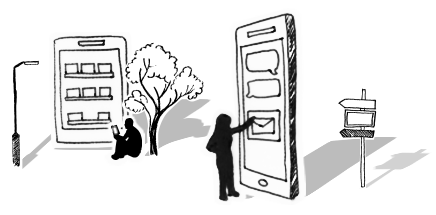




Getting People up to Speed During Business Change
The way in which we access learning has changed fundamentally since the days of “chalk and talk” training courses.
Organisations and individuals are no longer prepared to give up a day of their time to attend a course, where only a small percentage of what they learn is what they actually need to know.
Instead, we are accessing learning in ways that fit in with our daily lives; via YouTube, Google, modular eLearning we can complete as and when convenient and bite-sized “lunch and learn” classroom sessions.
This is exemplified by the “J3” approach: “Just enough, just in time and just for me”. This is the approach that Afiniti adopts when designing our learning interventions.
Just enough
The learning is customised to provide just the content that is necessary to cover the requirement. What constitutes “enough” will of course vary by person and role; this is covered by “just for me” below.
Just in time
Access learning when you need it. Many traditional learning roll-outs result in those at the beginning of the business change programme receiving their learning well before they need it, resulting in the need for refresher courses etc.
By targeting learning to just what is needed, it can be shorter in duration, so rolled out quicker resulting in less delay between delivery and point of need. Use of rapid, modular eLearning and user guides, both published online, can also allow people to refresh their knowledge themselves as and when they need to.
Just for me
Only access the learning you need – this involves a modular approach, both to classroom and online learning, allowing the flexibility to just access the learning relevant to you. It can also involve designing courses that differ by role, e.g. managers and staff, underwriters and administration etc. Additionally, optional modules can be positioned towards the end of the session to allow those who do not need to know certain aspects to leave the session earlier.
In fact, perhaps we should rebrand our approach as “J4”, since a final aspect is “Just in case”; sustainable resources that exist after we leave the project. These will include online published user guides, eLearning modules, FAQs, Intranet content etc.
Where it’s worked
An example of this was a project to provide learning to support an HR self-service system for a major publishing house – we created various eLearning modules, published on a learning management system, which allowed managers to check which of their team members had completed the learning. We also created courses to support managers in approving PDPs and expenses, which handed over to internal learning team, via a train the trainer process, so that new starters could benefit from the training once the project was completed. There was also an online quick reference guide for people to refer to.
The end result of this project was that globally, over 99% of people across the organisation successfully completed their PDPs, correctly and on time. The less than 1% that didn’t as it turned out, were all from the same team, and did not complete the eLearning, as their manager did not deem it necessary, which tells its own story!
All common sense stuff, yet all too often the one size fits all style of learning is still being applied. The J3 approach allows for a more learner focussed, efficient and cost effective method of delivery.
To get the latest change tips, advice and guidance directly to your inbox, sign up to our monthly Business Change Digest.
